Pad see ew (the last word is pronounced as if two syllables, like ee-yew) literally means "stir fry with soy sauce". With the right ingredients to hand, this noodle dish is bewitchingly straightforward to prepare. That such a time honoured restaurant favourite could come together so quickly and easily feels almost fraudulent.
There are a few tricks to achieve a top notch pad see ew. The first is high heat. Keeping in mind that commercial wok burners fire upwards of 100,000 BTU and the average home range is 7,000 BTU per burner, it's paramount you fire your wok on the highest heat possible. No exception.
Second, timing is important but perhaps contradictory to how you might think. During cooking, the noodles should be left undisturbed for a minute or two on each side to burn. Yes, burn. The caramelisation of sugars and charring is what gives pad see ew its signature flavour and texture.
Finally, you will never achieve restaurant level results unless you use fresh rice noodles (hor fun or sen yai). These are available at East Asian grocers, though unfortunately they are typically chilled. If this is the case, steam the noodles for a few minutes over medium heat so they are pliable and can be peeled apart without breaking up. If you live in or around London, I admonish you to make a trip to Lo's Noodle Factory in Chinatown, where you can buy straight-off-the-conveyor fresh rice noodles for a quid. If you are unable to purchase fresh rice noodles, I recommend making them fresh.
Pad See Ew ผัดซีอิ๊ว
Stir fried fresh rice noodles with soy sauce
- 1 tablespoon sweet dark soy (or kecap manis)
- 1 tablespoon thin soy sauce
- 1 teaspoon seasoning sauce
- ½ teaspoon Thai dark soy sauce
- ½ teaspoon white sugar
- 1.5 tablespoons vegetable oil
- 1 tablespoon minced garlic
- 50-60 grams kai lan, stems cut thinly on diagonal in 1 inch pieces
- ½-3/4 cup cubed tofu or mock meat
- 250 grams fresh rice noodles, separated
- Optional but recommended condiments for serving: chilli vinegar, white pepper, white sugar, roasted chilli powder, more vegan fish sauce or soy sauce.
- Mix all sauces and sugar together in a small bowl.
- Heat wok to highest heat possible. Add oil. When it smokes tip in the garlic, which will colour quickly. Once it starts to turn golden add kai lan and tofu. Don't be put off by the garlic burning a little (this style of cooking goes against European standards that insist garlic must never burn). Stir fry for 30 seconds.
- Add noodles and sauce, scraping the bottom to make sure any settled sugar doesn't go amiss. Toss the sauce through the noodles and then leave the whole lot for about a minute. It may seem like there's too much liquid to start but it will get soaked up by the noodles and cook down.
- Flip the noodles (it doesn't need to be an even flip – just get some of them turned over). Cook another minute or two undisturbed. It will take everything in you to not agitate them because they will char a little. That's the point. The sugars caramelise and burn a little on the noodles on each side.
- Serve with some white pepper on top and alongside condiments. I usually add some extra vegan fish sauce or soy sauce and loads of chilli vinegar. Sometimes sugar.
- Author: Kip Dorrell
- Serves: 1
- Cuisine: Thai
Now for a brief linguistic aside
The Royal Thai General System of Transcription (RTGS) is the official system Romanising Thai language. That is, converting non latin characters into their Latin alphabet equivalents. There are many other systems of romanisation and little agreement upon which is best to use.
If you have noticed inconsistent spellings of dishes on Thai menus, the reason isn't that restaurateurs can't spell. Instead the confusion is grounded in the lack of agreement on which system to use and whether to focus on phonemes (the sounds in words) or graphemes (the way we spell those sounds). This is why you may see the name of this dish spelled pad see ew, phad si iew, pat sii uuu, and many more. The official RTGS transcription is phat si io, but the most commonly accepted spelling is pad see ew.

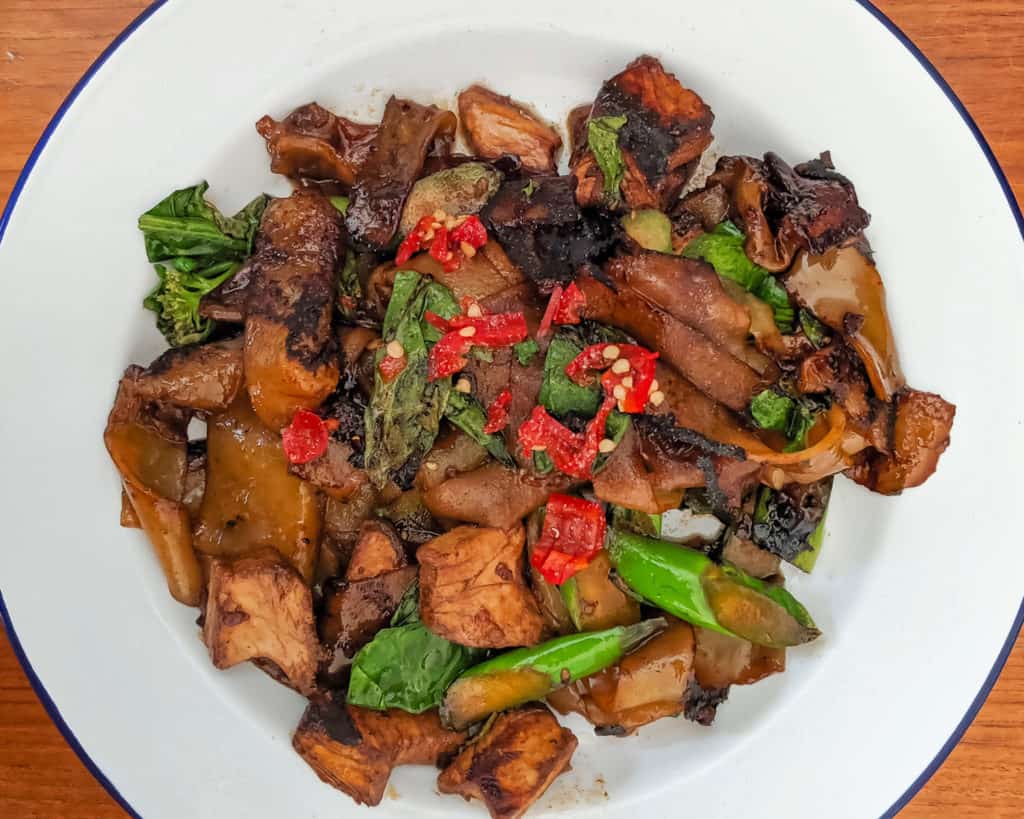
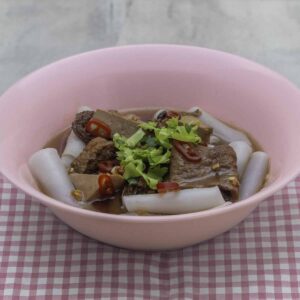
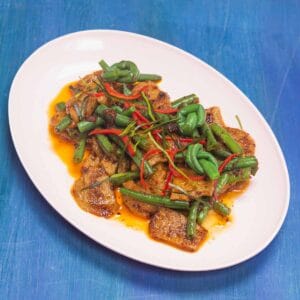
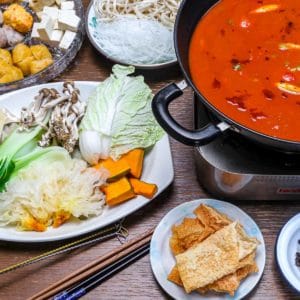
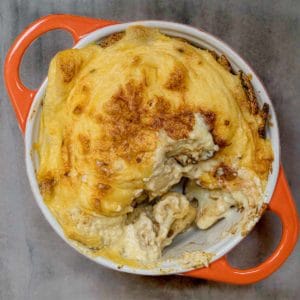
Len Till says
Thank you for this. My Thai noodles always come out flavorless.
Do you think a cast iron skillet would work? My flat-bottomed wok quickly warped into uselessness on my glass cooktop,
Besides different transliteration systems, I think there is also a lot of improvisation. But yeah, phonemes vs graphemes- phat or phad?
Kip says
Hi Len,
I am wondering if recipes you've followed assumed use of condiments, which is very Thai but that concept doesn't translate so well outside of the country. Especially with noodle dishes there tends to be an assumption the consumer will season them to personal taste.
I have never used a cast iron skillet for stir-frying. You should try it! I would leave the skillet on the burner (highest heat) for a few minutes to allow even heat distribution before adding the oil and starting the recipe. I think it will work fine, especially since much of the recipe is letting the noodles sit and char a bit.
I agree with you about the improvisation. That's a really good point. I think there are also a lot of people who believe they are authorities making matter-of-fact statements that fail to acknowledge the confusion and inconsistencies within the systems themselves.
Personally I don't think ph makes sense. Unless they have an understanding of why the words are written that way (or familiarity with the word itself) an English speaker person would assume it's an F sound. I am no linguistics expert though, so at the risk of sounding like the aforementioned pseudo authority personality I will stop now!
Len Till says
Condiments can't make up for the lack of char, I guess.
I hear you about the 'ph'. We just don't have the distinction in English represented by the 'h'. We aspirate by default.* I may stop using it. I guess 'aunt' and 'cloth' would be spelled the same. If there is a fabric shop in Thailand called "Auntie's Fabric", I guess you would write it "Pa Pa".
*Except when there's an 's' in front, like "spam".
Kip says
I suppose even if people were to settle on a system and use it, there would still be confusion. I wonder though if part of the issue is that most native English speakers (especially given that most of us don't know a second language) don't understand what transliteration is so don't consider that some foreign words may have a different method of pronunciation.
Thanks for the language lesson, by the way! My Thai is appalling. Basic beginner at best. Mostly all I know are food related things, but now I know how to say fabric 🙂
Franky says
Can someone recommend any seasoning 🧂 sauces? For this recipe
Kip says
Hi Franky,
Take a look at my Thai soy sauce primer for information about Thai seasoning sauce.
Emily says
How essential is it to use Thai dark soy sauce in this? I have all the other sauces listed, but I only have Chinese dark soy sauce. Would this be a reasonable swap or could you suggest a better substitute by mixing some other stuff together? Thanks!
Kip says
Hi Emily,
The flavour will be a little bit different (Thai dark soy has a more molasses-y note) but swapping out Thai for Chinese dark soy sauce in such a low quantity will be fine...
I reserve the right to improve malicious and trollish comments.